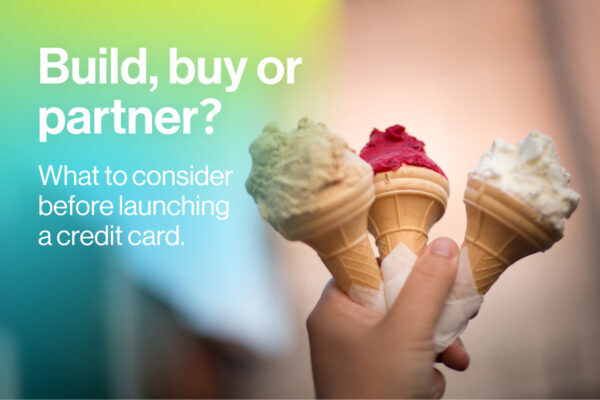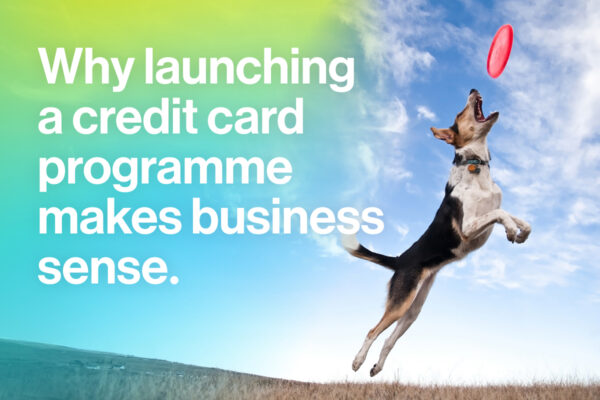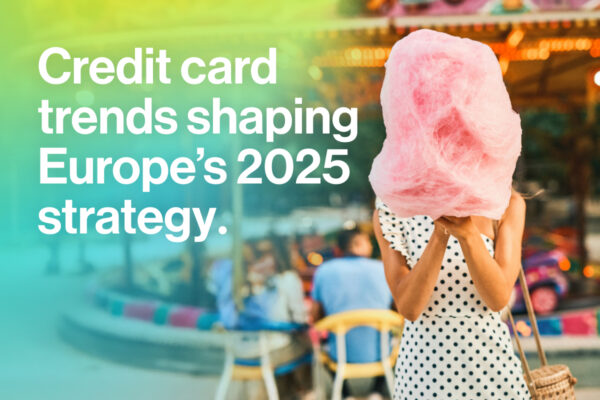10 questions to ask before launching your first payment card.

A strategic framework for future-proofing your payment programme.
Launching a card programme is one of the most high-impact moves a financial institution can make, but also one of the most complex. Whether it’s debit, prepaid or credit, a card product touches nearly every layer of your business: compliance, operations, customer engagement, monetisation and risk.
Yet, too often, institutions move forward without asking the strategic questions that drive success. The result? Delayed launches, underperforming products and frustrated customers.
At Enfuce, we’ve helped banks, challengers and fintechs across Europe launch cutting-edge card programmes, with flexibility, speed and regulatory clarity built in. If you want to find out how to launch your first payment card, start with this blog, which distills that experience into 10 essential questions every issuer should ask before launching a card.
1. What are your business goals?
It all starts here. How are you launching your first payment card programme? Are you launching a card to unlock a new revenue stream? Drive loyalty? Improve engagement? Or reduce your reliance on legacy infrastructure?
Each of these outcomes will shape everything from product features to go-to-market approach. This is not just a product launch, it’s a business strategy. And it must align with your long-term roadmap.
Enfuce solution: We tailor our issuing model, whether debit, prepaid or credit, around your commercial targets. Modularity means we help you grow from simple to complex, adapting to your strategy over time.
2. What problem are you solving?
A card should fix something broken, blocked or underperforming. Maybe it’s lacking customer retention. Maybe it’s your inability to serve youth or gig economy users. Or maybe your current tech stack is too rigid to support innovation.
Defining the core challenge ensures your card is meaningful, not just marketable.
Enfuce solution: Whether your blocker is internal (legacy stack) or external (customer churn), we design issuing stacks around value. From replacing outdated processors to launching brand new propositions, our card programmes solve problems at the root, setting you up with a solid foundation for success!
3. Who are you building this for?
Mass-market consumers, SMEs, teens, frequent travellers, underserved borrowers: each segment has unique expectations. Debit is ideal for daily utility. Prepaid supports control and budgeting. Credit enables loyalty and financial flexibility.
Enfuce solution: Serve multiple personas without platform duplication. Our infrastructure supports all three card types, for both consumers and corporates, from the same stack, so you can diversify without complexity. Our card programmes are tailored to your specifications, ensuring that all your unique business needs are met.
4. Build, buy or partner?
Many institutions face a familiar dilemma: building in-house offers maximum control, but demands high investment, long lead times and heavy regulatory ownership. Buying an off-the-shelf solution delivers speed, but can limit your ability to customise and scale effectively.
The smarter route for banks and digital-first lenders is to partner with a modular, compliance-ready issuer, one that enables you to maintain strategic control while reducing operational risk.
Enfuce’s approach: We provide a cutting-edge card issuing infrastructure that integrates seamlessly into your systems. From debit and prepaid to full credit programmes, when you launch your first payment card with us, you gain access to a configurable, API-first platform that delivers speed without compromise, while ensuring you retain ownership of the customer experience, product design and roadmap.
5. How fast do you need to launch your first payment card programme?
Speed-to-market is key for digital lenders and fintechs. For traditional banks however, the challenge often lies in migrating away from legacy systems, a process fraught with integration hurdles, compliance risks and operational disruption. That’s why scalability and low-risk migration planning are just as critical as speed when it comes to launching your programme.
Enfuce solution: From MVPs to full rollouts, we support rapid onboarding. Our 7-step migration guide and pilot models ensure no compromise on reliability or compliance.
5. How fast do you need to launch your first payment card programme?
But growth without operational readiness is dangerous. Credit is a margin-positive, engagement-rich product, but only if credit risk is controlled, fraud is contained, disputes are handled cleanly and compliance is never compromised.
6. What experience will set your card apart?
Today’s cardholders expect more than a slick app. They expect real-time access to spending data, the ability to manage card settings like geo-blocking or e-commerce toggles, seamless token wallet support and yes, robust security and dispute resolution when things go wrong.
With Enfuce: You can deliver a card experience that’s secure by design. Our infrastructure supports dynamic spend controls, fraud alerts and easy dispute initiation, all seamlessly integrated into your product. That’s not just a feature set, that’s a competitive advantage your card programme should have.
7. What’s your monetisation model?
Cards aren’t just utility tools. When well designed, they’re engines of income, from interchange and FX to subscriptions, invoice fees and interest revenue. With support for flexible finance solutions like revolving credit, instalments and BNPL-like offerings, credit cards also allow you to match customer needs with profitable repayment options.
Enfuce solution: We offer a highly competitive issuer revenue model, including full retention of interchange fees for consumer credit programmes. Combined with support for revenue streams like subscription plans, invoice and FX fees and ATM markups, our model gives you full control over monetisation across debit, prepaid and credit card types.
8. How will you manage risk and compliance?
Issuing cards means more than managing payments, it means being accountable for regulatory obligations, fraud detection and customer protection. From PCI DSS to PSD2, GDPR, AML and evolving scheme rules, compliance is demanding. But it’s the day-to-day realities of fraud and disputes, chargebacks and card misuse, that can truly strain internal teams.
Enfuce solution: As a dual-regulated EMI and a principal member of both Visa and Mastercard, we embed compliance with scheme mandates and regulatory requirements directly into our infrastructure. Our platform includes real-time fraud monitoring, configurable rule engines and streamlined dispute workflows, enabling you to operate confidently while meeting scheme-level obligations and protecting customers at every step.
9. Can your programme scale?
Knowing how to launch your first payment card in one market is only the beginning. Success means being able to scale across geographies, languages, currencies and customer segments without friction.
Enfuce solution: Our cloud-native architecture is purpose-built for scale. Whether you’re starting in one market or planning a multi-country rollout, our infrastructure adapts to growing volumes, products and regions, without requiring a reimplementation. With built-in localisation for invoicing, fees and UX, we help you launch quickly and expand smoothly across Europe and the UK.
10. How will you measure success?
Success isn’t just about low fraud: it’s about profitability, control and insight. From credit risk to cardholder behaviour, your programme needs real-time visibility into how it’s performing. That includes revenue drivers (interest income, usage rates), operational indicators (chargebacks, disputes) and credit metrics (delinquency, repayment trends). Without this, optimisation becomes guesswork. With it, you can drive growth and mitigate risk simultaneously.
Enfuce solution: Our dashboards give you real-time visibility across performance, including fraud incidents, chargeback rates and dispute outcomes, so you can optimise policy, improve CX and reduce losses proactively.
Final thought: Strategy is your best launchpad
A successful card launch isn’t about how quickly you can ship, it’s about how smartly you start your first payment card programme. These 10 questions help you frame the journey not as a tech deployment, but as a strategic lever.
With Enfuce, you don’t just get a processor. You get a partner, modular, compliant and obsessed with your success.
Ready to launch a card your customers will love, with a card programme your business will grow with?



